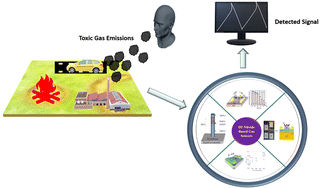Recent progress on group III nitride nanostructure-based gas sensors
Abstract
Group III nitrides are attracting considerable attention as promising materials for a variety of applications due to their wide bandgap, high electron mobility, high thermal stability, and many other exceptional properties. This review provides an overview of the current state of group III nitride-based gas sensors. The Schottky barriers formed at the metal–semiconductor interface respond to gas adsorption on the metal surface. The metal Schottky contact-based group III nitrides have been used to detect several hazardous gases. In light of these recent developments, three major topics are addressed in this review. Firstly, the recent gas-sensing reports on the applications of binary and ternary nitride layers and nanomaterials of group III nitrides for detecting several hazardous gases are highlighted. Secondly, several heterostructure combinations of group III nitrides and functional materials responsible for gas sensing are discussed in detail with their appropriate sensing mechanisms. Finally, the review concludes with the future perspectives and outlook of group III nitride-based gas sensors. To provide a thorough performance comparison, important sensing performance parameters such as the limit of detection, response time, recovery time, and operating temperature for various types of sensors are summarised and tabulated.

- This article is part of the themed collection: Journal of Materials Chemistry C Recent Review Articles


 Please wait while we load your content...
Please wait while we load your content...